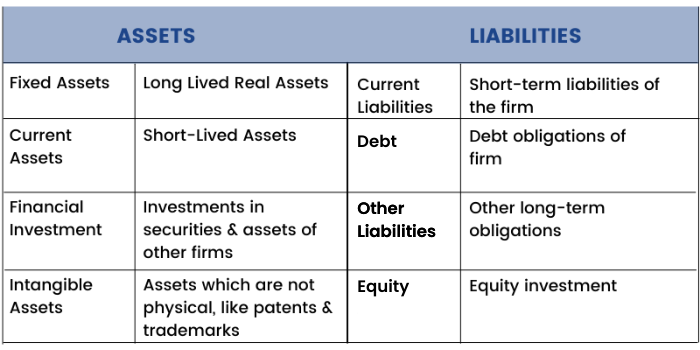Shareholders’ Equity
Shareholder's equity is calculated as total assets minus total liabilities and is also known as Owner's equity or Stockholders equity. Earlier, we explained both assets & liabilities. Now, let us focus on understanding 'Shareholder’s equity.'
This is the net worth of the company aka the stockholder's claim to the assets of the company after all liabilities have been paid off.
It is the initial cash/capital brought into the entity by its owners plus the additional surplus in the form of profits and losses. Shareholders’ Equity can be divided into sub-parts such as securities premium, reserve fund and retained earnings.
- Authorized Capital
The maximum amount of share capital that a company is authorized to issue according to its Articles of Association is called the authorized share capital of the company. The amount of authorized capital is always measured at par value (face value) and can be increased through an ordinary resolution approved by the company’s shareholders provided it is permitted in the articles of association.
Similarly, authorized capital can also be reduced. This is known as diminution of share capital.
- Issued Share or Paid-up Capital
The issued share capital is that part of the authorized capital that has been issued by the company. The difference between the authorized and issued share capital is the part which the company can further raise from the public without passing any further approval by the shareholders.
- Reserves & Surplus
Reserves are funds set aside by the company for unforeseen future obligations. The company can use the general reserve for various purposes including issue of bonus shares to shareholders, payment of dividends when profits are insufficient.
Excess profits in the Profit & Loss Account are distributed as dividends, re-invested in the business or transferred to the general reserves.
The company can park its excess funds in the following reserves:
1) General Reserve
It is a reserve created by transferring profit's which remain undistributed over the year after accounting for dividends and other deductions. This reserve is used for funding expansion, acquisition, paying dividends, discharging of liabilities, writing off extraordinary and/or contingent losses, buyback and/or redemption of securities
2) Share Premium Account
This account includes the amount which is transferred "from the excess value at which the shares of the company are issued over and above its face value” during the public issues. The amount can be used for buybacks, bonus issues or to write off discounts on further issues of shares.
3) Capital Reserve
Capital reserve represents surpluses or profit in respect to transactions on account of revaluation of assets or forfeiture of shares. It is not a free reserve and includes share premium, capital redemption reserve, development rebate reserve, profits on reissued or fortified shares and also includes any grants received from central or state government or other assets gifted by central or state governments free of cost.



